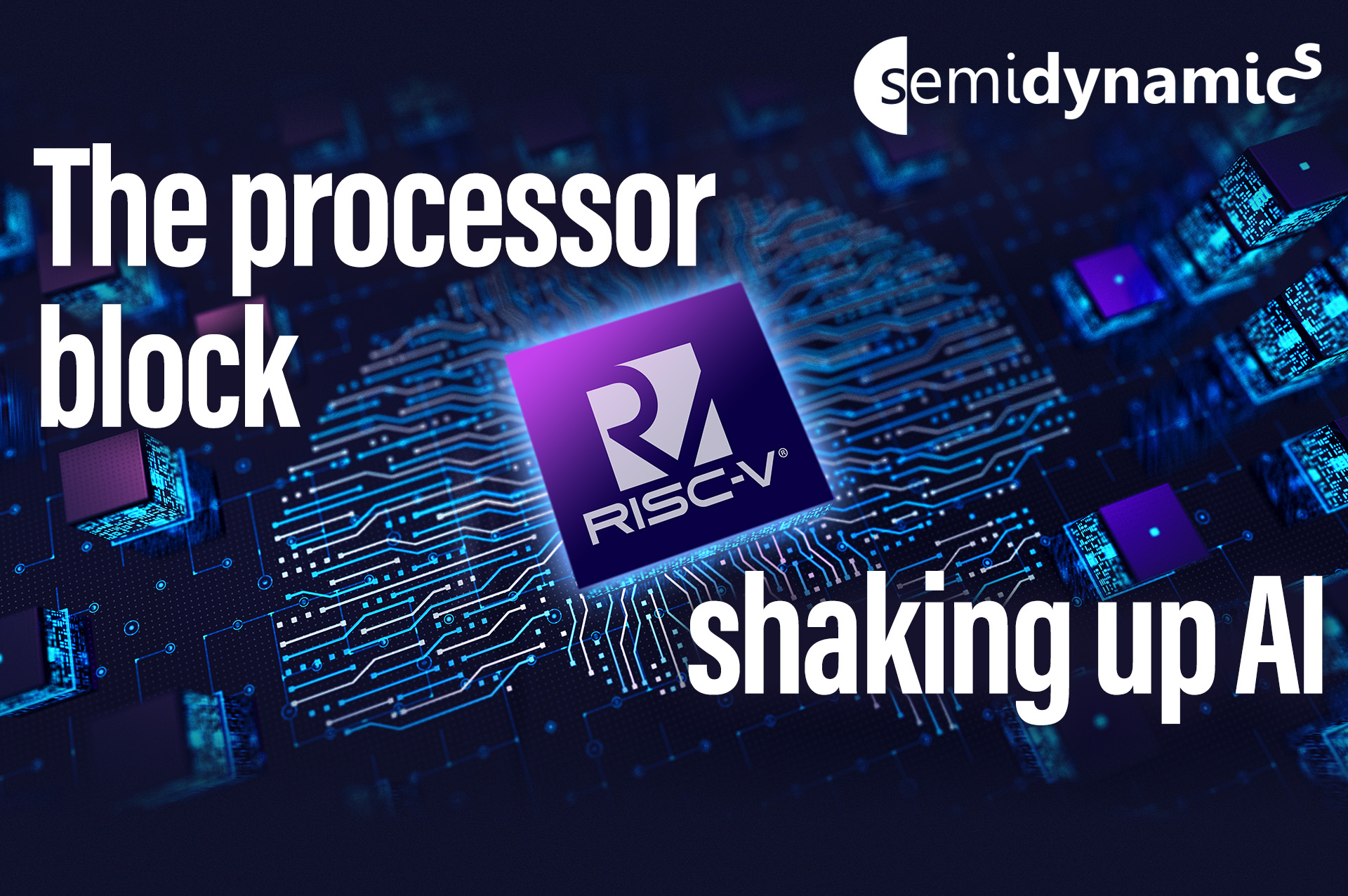Products
Solutions
Published
12 June 2025
Written by Harry Forster
What if your next AI accelerator wasn’t locked down behind a licence agreement, proprietary tools, or a “take it or leave it” IP block? That’s the promise behind SemiDynamics’ latest RISC-V AI processor solution—a flexible, scalable architecture that gives chip designers the freedom to innovate without compromise.
We caught up with the team at Mobile World Congress to dive into what makes this RISC-V AI processor so different. And spoiler alert: it’s not just about the open-source ISA. It’s about letting engineers actually design the silicon they want.
The world of embedded AI is exploding, but most options force you into predefined footprints, rigid dataflows, and black-box NPUs. SemiDynamics is flipping the script with a modular RISC-V AI processor architecture where you choose the performance level, you scale the number of NPUs, and you control the instruction set.
Need a light edge-AI accelerator? Done. Need a monster 60+ TOPS engine to run Llama? No problem. This isn’t a one-size-fits-all approach—it’s more like chip design à la carte.
And let’s talk about customisation. Because this RISC-V AI processor isn’t just scalable—it’s extensible. Add your own custom instructions, adjust memory access, or fine-tune your vector and tensor units. You won’t find that kind of flexibility in x86 or even traditional ARM designs.
What’s more, because this is based on open RISC-V standards, you’re not stuck navigating proprietary toolchains. Everything from software development to debugging stays transparent and under your control—perfect for startups or OEMs who want to avoid vendor lock-in.
SemiDynamics’ solution is already drawing attention from silicon designers building AI into everything from data centres to next-gen hearing aids. And yes, the same RISC-V AI processor architecture is powering both—because it’s all about scaling to suit your needs.
In a market racing towards AI ubiquity, the ability to shape your own processor architecture could be the ultimate competitive edge. As more applications move to the edge—and more engineers demand AI processing under their own rules—it’s clear that open platforms like this RISC-V AI processor won’t just be an alternative.
They might be the future.
Comments are closed.

Comments
No comments yet